Glue and scanning to create Abstract Art
By Dirk Dom
A scanner isn’t a photo camera. Yet it can be used to make images. It has a totally crazy resolution if the object gets a bit bigger. If you scan something four inches on a side at 3,000 DPI, you get a whopping 144 megapixel image. Eat that, you Sony users!
With this project I was making flat objects on a disc, 3.5 inches diameter, so scanning was a much better option than using a macro lens.
What did I do? (It’s O.K. if you judge me crazy)
I put Plexiglas glue on a 3.5 inch glass disc. I mixed it with blue and yellow polyester resin coloring. Put another glass disc on it. Squeezed. Pulled it apart by very carefully putting an X-acto knife between the discs. Let the result dry. Scanned. Photoshopped.
DISCLAIMER: You have to be aware that for me, anything goes in abstract photography. I used Photoshop.
Getting curious?
Well, if Steve actually puts this on his website, here goes:
This is how it actually looked, (almost) no processing:
This is it, solarized:
I wanted it red:
I cleaned the discs with acetone and gave it another try:
Details of the disc:
The detail in the images is incredible. I’m having them printed 24 inches.
If, now, you feel an overwhelming desire to go mess with glue and coloring, you have to be aware that every image had thousands of white and colored little spots and little bubbles. It was three to five hours of non stop retouching per image, even for a three and a half inch disc. I’ve done retouching of scans of old magazines, well, this was ten times worse. I actually had watering eyes.
Now for the serious part.
These patterns are made by the free flowing liquid, the glue. Mathematics and physics still haven’t figured out how to calculate and predict these patterns. They are chaotic. They belong to the same family as the curves a flow of water makes going down an inclined plane without any obstacles. You can see that path in a meandering river.
Well, after two tries, I thought it was enough, just too much retouching. Of course every time you do it again, the pattern will be different, but it’s basically more of the same. You can do the same with varnish, paint, engine or vegetable oil and different colorings in different spots and more or less, longer or shorter pressure. Maybe you should show this to your kids!
That’s about it, hope you enjoyed it, and thanks, Steve!
Bye,
Dirk.

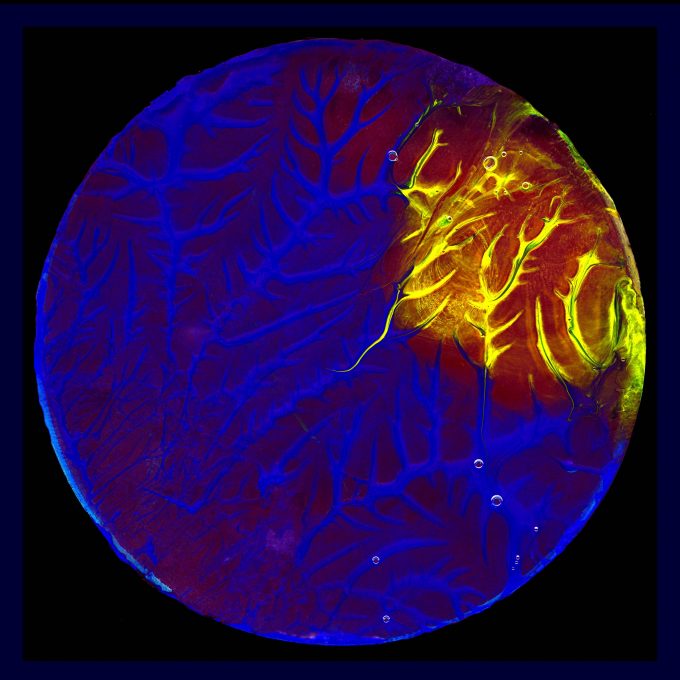
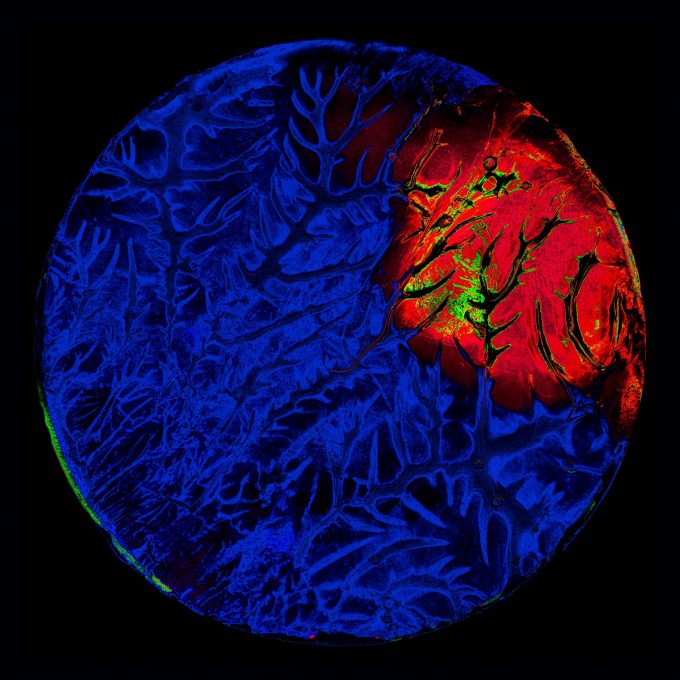
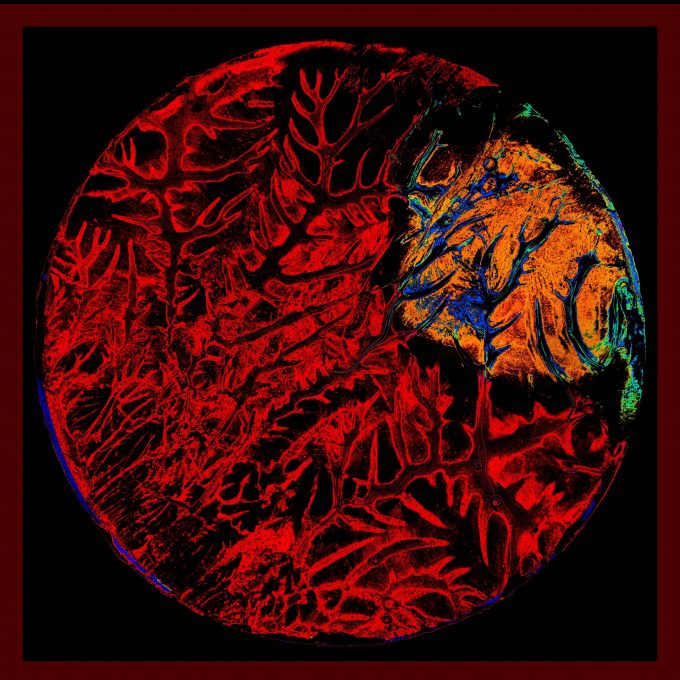
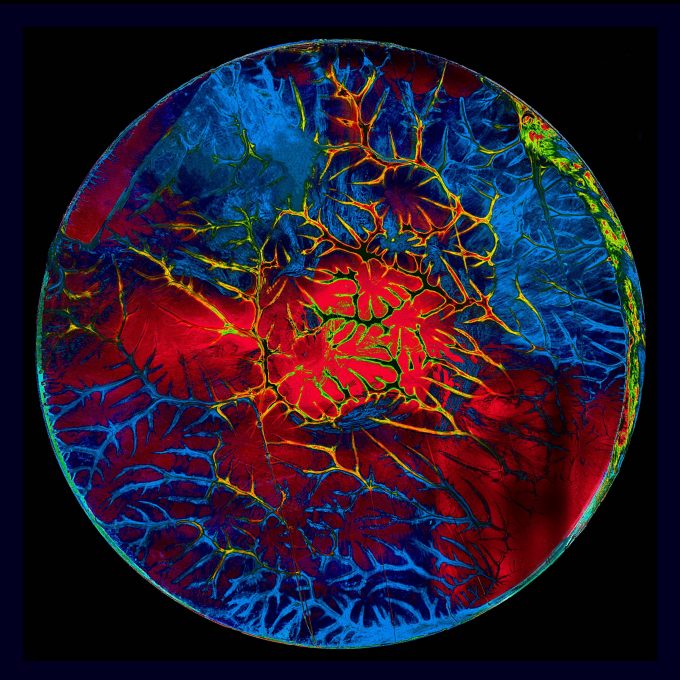
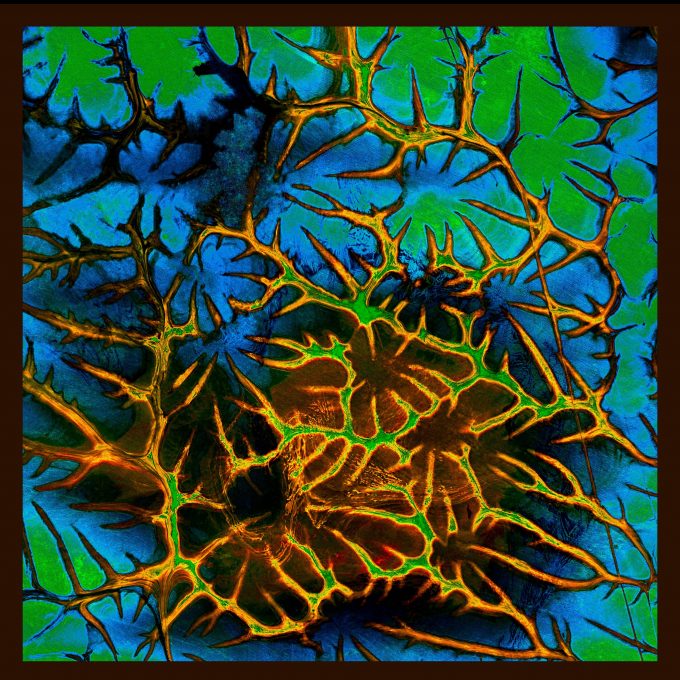
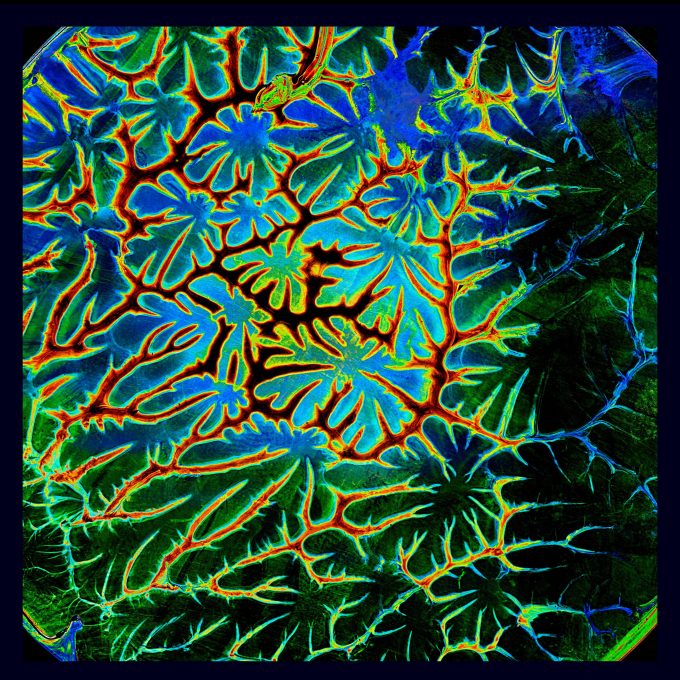




No question that this is art and your Photoshop skills are the equivalent of a paintbrush. Absolutely wonderful images, Dirk. My personal favourite is the 4th one (after cleaning with acetone). Actually with my medical background they reminded me of photos of some horrendous new retinal disease!
I can understand why you’re having them printed, they’ll look stunning on a wall and I’d love one myself!
Hi!
If you give me your email address I’ll send you the JPEG (25 megabyte, 2 by 2 ft, 300DPI) with Wetransfer and you can get it printed. Tell me which ones you want.
Bye,
Dirk.
Apologies for the lateness Dirk, I’ve not been on here since then. That’s a very kind offer. Is there any way to send you my email address without posting it publicly on the website?
Tim
Wonderful! The images have extraordinary depth. Are they really flow patterns or drying patterns? Or maybe both?
They’re flow patterns. They may get a bit wider as they are drying up, but I think not. I think with oil they would vanish after a while.
Dirk.
Dirk
These certainly qualify as abstract art. Have you tried photographing these discs with cross polarized light? You might like the affect. Which will be similar, yet different.
Also, I second the comment about the ventilation.
PaulB
Reminds me of planets from sci-fi movies. Thanks for inspiring.
I think you should recommend a well ventilated room for some of the materials you mention. No point dying for your art, unless your names Vincent.
Actually fluids dynamics is one of the most complex sciences among the classical physics.
That has nothing to do with photography but the result is some interesting.
Bit psychedelic though
Guess better using a random surface instead a disk
The detailed shots look cool. Especially the last one.